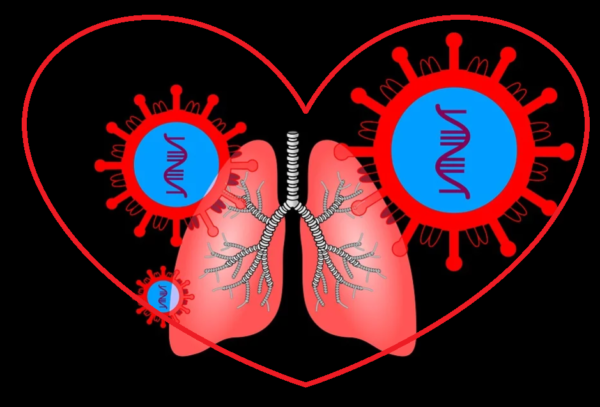Cardiac disease in Coronavirus infection (COVID-19) has been associated with an increase in mortality. The up-regulation of ACE2 levels in patients with hypertension, diabetes mellitus, and cardiovascular disease has been linked with increased mortality in these patients.
Could ARBs prevent us from Coronavirus infection? or Could ARBs be used to treat patients with coronavirus infection? I know these are strange questions. But why ARBs? Why not some antiviral medications like remdesivir, favipiravir, or maybe chloroquine?
Before answering the question, Have you ever thought about why hypertensives, diabetics, and patients with heart diseases have increased mortality? Patients with diabetes are immunocompromised so they have increased mortality rates.
Similarly, patients with cardiovascular diseases are also considered to have major comorbidity and the mortality rates in all illnesses including coronavirus infection are high.
But why are patients with hypertension more likely to experience complications?
ACE-2 receptors in Covid-19 infection:
The immunological and cardiovascular systems depend heavily on the membrane-bound aminopeptidase known as angiotensin-converting enzyme 2. ACE-2 plays a role in the emergence of diabetes mellitus, heart disease, and hypertension.
It causes salt retention, cardiac remodeling, and vascular stiffness. ACE-2 is abundant in the lungs and myocardium. In patients with hypertension and cardiovascular diseases, the ACE-2 levels are up-regulated.
These receptors are thought to act as functional receptors for the attachment of SARS-COV-2 (COVID-19) infection. Similarly, ACE-2 levels are upregulated in patients who are already taking ARBs and ACE inhibitors.
The upregulation of the ACE receptors could result in more cellular entry-points for the virus.
But whether ARBs or ACE inhibitors could cause more damage or whether patients on these medications need to change their medicines is debatable. ARBs could be a potential therapeutic strategy used to treat these infections as ARBs could block the receptors.
Contrary to ARBs, ACE inhibitors may be counterproductive because they have no impact on the receptors and may increase the up-regulation of the ACE2 receptors by preventing the conversion of angiotensin I to angiotensin II.
Pre-existing cardiac disease in Coronavirus infection:
The MERS-COV infection was more common in hypertension and patients with underlying heart diseases. In patients who were infected with the MERS-COV infection and developed severe illness, 50% of these patients had hypertension and 30% of them had pre-existing cardiac disease.
The COVID-19 infection was more commonly seen in the elderly, and patients with hypertension, diabetes, and heart diseases [Ref]. Patients with pre-existing heart diseases were also more likely to develop severe symptoms.
Sixty-eight percent of patients with severe symptoms had hypertension, twenty-five percent had cardiac disease, and forty-four percent had arrhythmias.[Ref]. Similarly, data from the NHS showed more mortality rates in patients with pre-existing heart disease and hypertension. Those who were more than 60 years of age were more likely to develop more severe pneumonia and more severe symptoms.
The cardiac function declines rapidly when the patient with pre-existing heart disease gets the COVID-19 infection.
COVID-19 and Acute Coronary damage:
Acute myocarditis and heart failure have also been linked to the new coronaviruses COVID-19, MERS-COV, and SARS-COV-2. 5 out of the 41 patients admitted to Wuhan hospital developed acute myocardial damage.
Acute myocardial injury manifested in 4 of the 5 patients admitted to the critical care unit as dramatically elevated, highly sensitive cardiac troponin I. When compared to patients who were managed outside of the intensive care unit, patients who were admitted had noticeably higher blood pressure.
Similar to our patient in Pakistan who was roaming around seeking cardiologists' opinions for chest pain, some of the patients admitted in Wuhan for coronavirus first presented with cardiovascular symptoms.
Patients with cardiac disease may present with palpitations and chest pain.
These patients presented with chest tightness and palpitations. Among the patients who died, 11.8% of them who did not have the pre-existing cardiac disease were found to have substantial cardiac involvement and markedly raised cardiac troponins during hospitalization.
The mechanism of myocardial damage is related to the ACE2 levels that are not only expressed in the lungs but also in the myocardium. A cytokine storm brought on by T-cell activation and hypoxemia owing to pneumonia and lung injury are two additional potential causes of cardiac damage.
Could the cardiac disease in Coronavirus infection persist?
Patients who were infected with the SARS infection were later found to have abnormal glucose homeostasis, dyslipidemias, and cardiovascular abnormalities. The exact mechanism is not clear and further studies may be needed. However, cardiac damage may become permanent and persist resulting in more disability.
In conclusion,
Cardiovascular protection should be a priority if a person gets infected especially in patients with premorbid diabetes, hypertension, and pre-existing cardiac disease. Antimalarial drugs may be used used in the prevention of Coronavirus infection. However, QTc prolongation is a risk that should be watched for!




